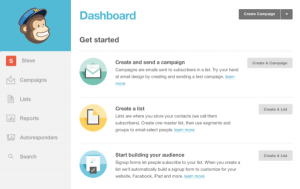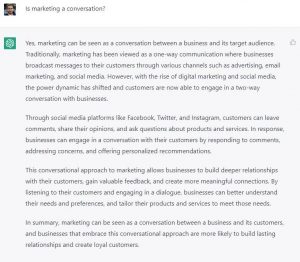— November 21, 2017

Effective human resources management prevents company-wide anarchy.
From solving internal disputes, to presenting a united front to customers, to just plain abiding by the law, HR is a vital discipline which is all too often generalized and pushed out of mind.
That’s why today I’ll be going through 12 HR management tips to help you keep your employees engaged and your company running smoothly. From the utter basics such as being open to hearing feedback on techniques like using social media to grow your network, keep reading to learn everything you need to know to avoid being another Michael Scott.

Plus, when the cost of employee disengagement is so high (and common), it pays to have every trick in the book.
“Employee disengagement costs more than $ 500 billion per year to the U.S. economy.” – Empxtrack blog, HR Statistics For Human Resource Management
Let’s get to it.
6 basic HR management tips
First up I’m going to blast through some of the more common HR management tips. These are all pieces of advice which are readily shared (so I won’t spend too much time on them), but they’re nonetheless vital to grasp in creating a business which runs efficiently.
After this quick-fire round, I’ll go into more detail on some of the more advanced (and lesser-known) tips.
Communicate regularly
Communication is vital in every profession, but especially so in HR. You need to regularly touch base with both your team and the rest of the company in order to keep tabs on everything and make sure the whole operation stays on track.
Again, this is one of the more basic HR tips, but having a solid link to others through regular meetings and an open door policy to communication and feedback goes a long way in knowing where (and who) you need to focus on.
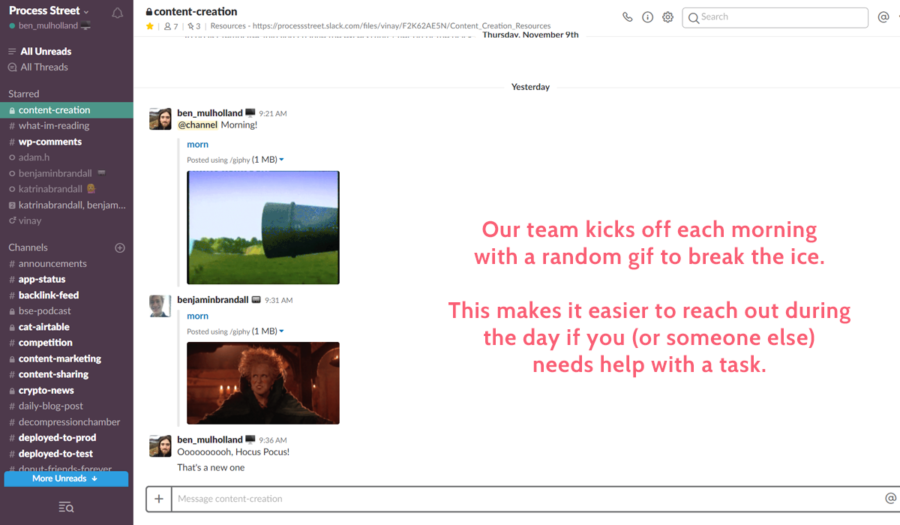
Stay organized
Although it’s another blanket term, staying organized is a vital piece of the HR puzzle. Whether you’re looking at your physical or digital workspace, take the time (even just a half hour every week) to sort out your task list, organize your resources and process your inbox.
Above all else, make sure your time management skills are up to standard. Whether you’re busy or not, you’re dealing with the people responsible for keeping your company running smoothly, so saying “I’ll try to get around to it” isn’t good enough.
Prioritize your tasks, block our your time, and create a daily routine to help stop procrastination.
Be tough, but firm
As an HR manager, you’ll be tasked with sorting out internal disputes and/or dealing with problems concerning how your employees conduct themselves and perform their duties. This means that you need to be tough but fair, especially when concerning company policy.
Don’t let company policy stop you from considering the context in which any breaches occur (always remember the “human” in “human resources”), but don’t hesitate in laying down the law when it matters.
It doesn’t matter if you’re dealing with the lowest rung or a manager with a lot of influence – if someone’s out of order, you need to know when and how to enforce company policy. Failing to do so will not only undermine your own authority, but allow your company to become a disjointed mess of opinions and practices, which will only confuse and alienate your customers.
Be open to hearing what others think
Just because you’re enforcing policy doesn’t mean you should be dogged in its pursuit. Be open to hearing what others think about both it and anything else they may have a problem with, and always take feedback on board.

This comes back to having a policy of open communication – even if you don’t agree with someone’s opinion you shouldn’t discourage them from voicing their views. There are exceptions (such as discrimination), but sometimes policies need to be updated or steps taken to improve the current state of things.
Lead by example
You need to be just as accountable to your own policies as everyone else, if not more so. Leading by example is challenging, for sure, but doing so can provide a template which your team (and all other employees) can then follow.
It’s hard (if not impossible) to enforce rules which you yourself break, and trying to do so will only create resentment towards your position. Do yourself a favor and keep everyone else on your side by adhering to the same rules – it’ll make it much easier to connect with employees when they’re having problems or need to be brought around to new policies and practices.
Be as specific as possible
Transparency and clarity are key to being an effective HR manager. Whether you’re explaining duties to a new hire, assessing the processes your team follows, or dealing with the dreaded grey areas of company policy, you need to be specific and clarify exactly what you mean and what needs doing.
Now that some of the more basic HR management tips are out of the way, let’s get stuck into some of the lesser-talked-about (yet nonetheless vital) pieces of HR advice.
Learn how the business (and each team) operates to see the bigger picture
The more you know about how everyone interacts with each other, the success metrics of each team, and how one team affects another, the easier it is to see the bigger picture and account for that when making big decisions.
By learning the ins and outs of how the business operates as a whole and how each team affects the others, you can more easily see the cause of each problem and get to the root of it quicker.
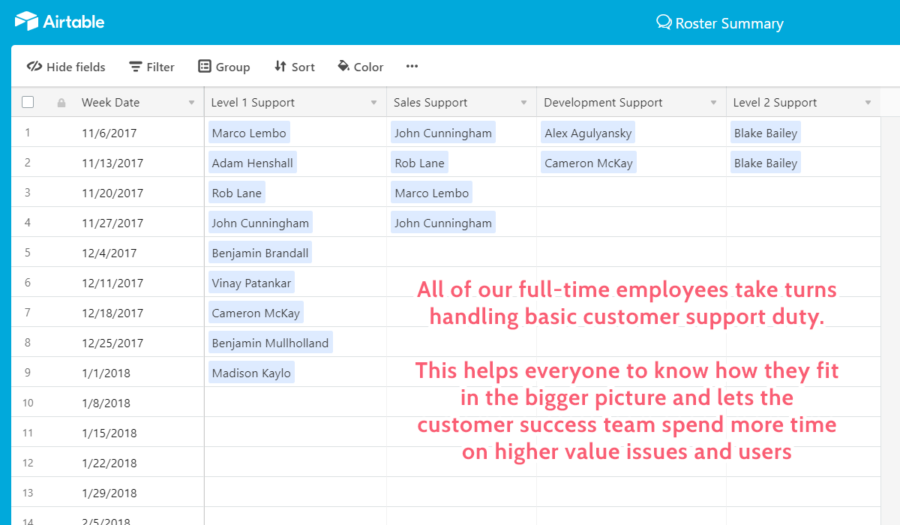
Not only that, but this knowledge then lets you predict the knock-on effect of problems surfacing in a particular team (eg, someone is dismissed, quits, is ill or on holiday, etc). Whether you have to divert resources to account for the issue or provide extra training to let others take on new duties, you’ll know the best course of action to take and where to focus your efforts.
Beyond that, knowing how the business and financial elements therein operate lets you give tangible performance measures to employees. One of the best ways to motivate an employee is to show them how the business is doing overall, and how they contributed towards that, which can be difficult to do if you’re not aware of how their duties fit into the bigger picture.
Use social media to keep up-to-date and build your network
Whether you like it or not, being active on social media is a great way to make new contacts, get new information, and improve both personally and professionally.
I know that it can be scary for those who haven’t used it before. Heck, I’m far from a shining example of social interaction, but even I can see the benefit of being able to keep tabs on news, companies, blogs, and thought leaders in my field. It lets me see the best new practices being developed and then use that knowledge to improve my own performance.

At the very least you should grab a Twitter account and follow HR thought leaders such as these:
If you want to go one step further you can also search what people are saying about your company, using tools like BuzzSumo to see what the most shared content on a particular topic is. This lets you see both what the most popular (although not necessarily the best) content is for anything you want to brush up on, and by looking at their source and author you can find new sources to follow and track on social media.
Save time and effort by using an RSS feed to collect useful content
We here at Process Street are big fans of using RSS feeds to collect content from useful sources into single location. That way, instead of having to surf around the leading blogs in your niche and manually choose what to read, you can just load up your feed and see an overview of the top posts those sources have published.
For example, let’s say that you’re subscribed to 10 different HR blogs so that you can keep tabs on industry best practices, and then another 10 blogs for things like upcoming software and tech releases. All of these are pretty much vital to staying relevant and improving both personally and professionally.
Unfortunately, in order to read the content they publish you’ll need to either manually open all 20 blogs and browse through their feed or you’ll have to dive into your email to search for the emails they send (and, again, manually open the posts in various tabs).
It’s much more effective to save yourself the trouble and use an RSS feed like Feedly to automatically collect the content they publish, arrange it by date or popularity, and then browse through a single display to quickly decide what to read. Not only that, but Feedly also lets you read (most) posts without leaving the app, so you can get through the whole thing without the hassle of flicking between websites.
Document your processes to consistently achieve success
This wouldn’t be a Process Street article without mentioning the importance of having set processes and document workflows for everything you do more than once.
By having a consistent process to follow, everyone can perform their duties to a high (reliable) standard, since you’re providing them precise instructions to follow at every step. Not only that, but when something does go wrong you can trace that back to either a fault in the process or the employee not following the process, both of which can be corrected.
Speaking of consistency, a documented process lets even new, inexperienced employees perform their duties to the same standard as your veterans. Sure, it might take them a little longer to go through everything, but the steps taken remain the same, and thus the results shouldn’t differ much at all.
You’re not just giving instructions either; having employees track their progress as they work through your processes gives you a measure to easily track what’s been going on, how it’s being completed, and who’s doing what. If a problem is caused by a bad process, practices like visual process innovation let you improve your processes reliably and with thorough testing, letting you solve any serious problems before they cause any lasting damage.
They also increase employee accountability (especially if you can assign team members to individual processes or tasks), since everyone (or at least team managers) can see precisely how everyone is completing their tasks and how much work they are doing. It might seem small, but this can often provide the motivation employees need to get started on their tasks, which is often the hardest part.
Finally, having documented processes will help to limit the most damaging factor of all; human error. Even with the best intentions and a real drive to complete their tasks, employees are often relying entirely on their own memory to complete tasks, which can lead to catastrophic errors.
Human error is especially important when dealing with veteran employees, since they will often settle into a specific way of completing their tasks. If they take a shortcut somewhere or forget a particular task and aren’t called out on it, they’ll likely build a habit of performing their duties with that mistake as a constant.
Don’t leave it to chance. Your team will run smoother and your employees will get less frustrated (since they can breeze through their tasks without having to stop and think about what they need to do next) if you document your methods and get a solid business process management plan.
As a side note, we’ve created a number of HR templates which you can use for free. These cover common processes such as employee onboarding (and the recruitment process in general) and are ready to use as they are, but you can also use them as a base and then edit them to your specific needs.
Hire people better than you to create a company of giants
Hiring isn’t all about finding the person who best fits your job requirements. They’re important, yes, but should serve as more of a bar to entry than anything significant to a hiring decision.
Instead, you need to try and find people who are both better than what you need and who are a good fit with the rest of your team.
Put it this way; if you hire someone who barely meets your minimum requirements, the benefits outside of the core “pay vs work done” arrangement are entirely in favor of the employee. They will get extra experience, another company on their resume, and hone their skills through work. In return, you get very little extra other than (arguably) the loyalty of that employee.
If, instead, you hire someone better than you are (or at least someone very experienced) then those benefits are reversed. Suddenly, your team are the ones learning from the new hire’s experience and knowledge in their field.
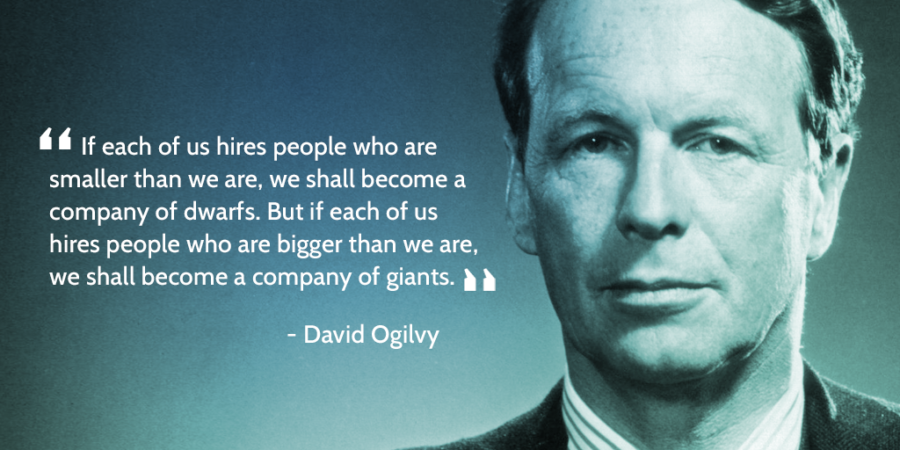
As mentioned earlier, you also need to consider how the new hire will fit in with the rest of their team and the company in general. No matter how good a candidate might be, if they’re only going to butt heads with the rest of the team, they’re probably going to do more harm than good in the long run.
This element of hiring is far more individual to your team and the candidate, so I can’t say too much more about it. However, try to feel out whether they will gel with the rest of your team by asking about their previous teams, what they like to do in their spare time, and so on.
You could also try and get several current team members to have brief interviews or chats with the candidate and then get their opinion on them. Remember that hiring a new party will change the dynamic of your entire business, and so multiple interviews are a great way to see what kind of impact that will be and even help build relations before you’ve even decided on the final hire.
Pay special attention to onboarding to set up lasting returns
The best new hire in the world won’t help you if your onboarding isn’t up to scratch, but often people can forget exactly what impact this has.
If your new hire doesn’t work out, it doesn’t just waste the time and resources spent to train them. It actively reduces the performance of the rest of your team and everyone whose work is in some way linked to the new hire’s.
This is why employee onboarding is so important, and why including everyone in a central culture is vital to the ongoing success of a business.
To quickly blast through the elements to effectively onboarding your employees:
- Have their equipment and any necessary resources prepared in advance
- Assign multiple mentors to make the experience better and more effective for all parties
- Use documented processes to quickly get them up to speed
- Touch base with them regularly to make sure things are running smoothly
- Introduce them to the rest of their team early
- Make sure everyone knows who’s responsible for what, and who the hire can turn to for advice on particular topics
- Set expectations (both for the company, and what the employee can expect) clearly and early on
- Add a personal touch by asking hires what their favorite candy is in their interview, then have a piece sitting on their desk come their first day
If you want to take things to the next level (or just save yourself the effort of building an onboarding process from scratch), check out our premade new employee onboarding processes. They’re completely free, and you can either use them as they are or edit them to your specific needs.
Do you have any HR management tips to share?
That’s all we have time for today, but far from it for me to suggest that I’ve covered everything there is to know in terms of HR management tips and advice. While I covered as many points as I could (and tried to bring some lesser-known techniques to light), here’s where I turn to you, our readers.
Do you have any HR management tips from your own experience? Have any advice from the view of someone on the receiving end of HR? Heck, even if you have any success or horror stories of how situations and employees were handled, I’d love to hear from you in the comments below.
Business & Finance Articles on Business 2 Community
(106)

